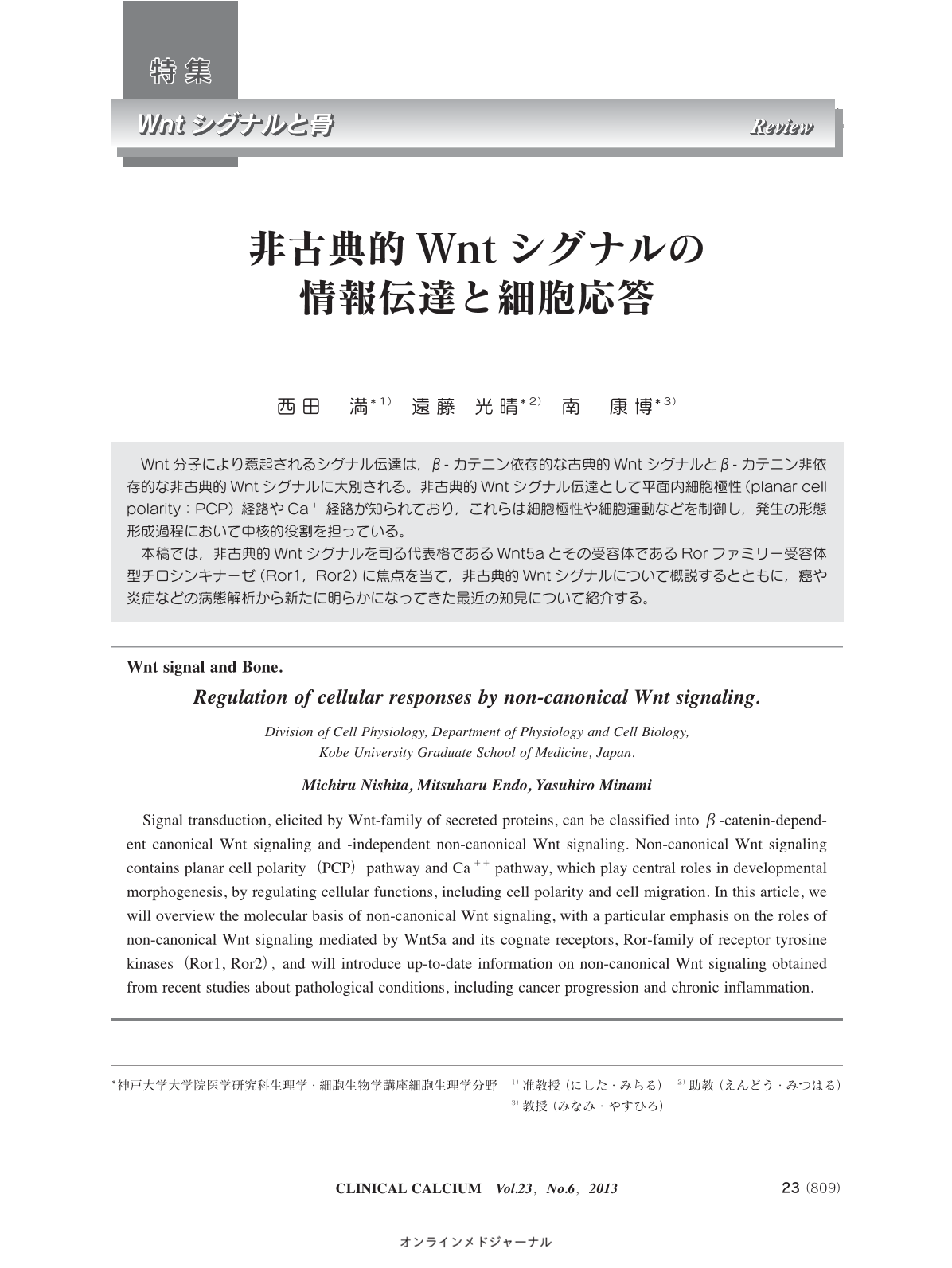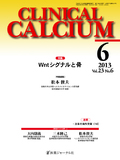Japanese
English
- 有料閲覧
- Abstract 文献概要
- 1ページ目 Look Inside
- 参考文献 Reference
Wnt分子により惹起されるシグナル伝達は,β-カテニン依存的な古典的Wntシグナルとβ-カテニン非依存的な非古典的Wntシグナルに大別される。非古典的Wntシグナル伝達として平面内細胞極性(planar cell polarity:PCP)経路やCa++経路が知られており,これらは細胞極性や細胞運動などを制御し,発生の形態形成過程において中核的役割を担っている。 本稿では,非古典的Wntシグナルを司る代表格であるWnt5aとその受容体であるRorファミリー受容体型チロシンキナーゼ(Ror1,Ror2)に焦点を当て,非古典的Wntシグナルについて概説するとともに,癌や炎症などの病態解析から新たに明らかになってきた最近の知見について紹介する。
Signal transduction, elicited by Wnt-family of secreted proteins, can be classified intoβ-catenin-dependent canonical Wnt signaling and -independent non-canonical Wnt signaling. Non-canonical Wnt signaling contains planar cell polarity(PCP)pathway and Ca++ pathway, which play central roles in developmental morphogenesis, by regulating cellular functions, including cell polarity and cell migration. In this article, we will overview the molecular basis of non-canonical Wnt signaling, with a particular emphasis on the roles of non-canonical Wnt signaling mediated by Wnt5a and its cognate receptors, Ror-family of receptor tyrosine kinases(Ror1, Ror2),and will introduce up-to-date information on non-canonical Wnt signaling obtained from recent studies about pathological conditions, including cancer progression and chronic inflammation.



